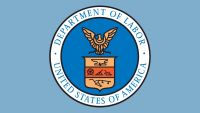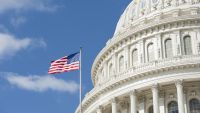Regulatory Alert - New Federal Regulation
On August 15th 2007, the Department of Homeland Security (DHS) published a final rule related to so-called "no match" letters employers receive from the Social Security Administration. This new regulation is meant to address the issue of "no-match" letters, which employers receive from the Social Security Administration stating that the SSA is unable to match the name and social security number (SSN) provided for a specific employee to its records. The so-called "no-match" regulation will have a monumental impact on U.S. employers. This is not something that has been overlooked by DHS, which in a meeting with key stake holders acknowledged the significant burden the new rule will place on employers.
This is meant to make each of you aware of this new Federal Regulation and provide guidance and best practices for adhering to the new regulation. Please be advised that this will affect ALL Mason Contractors. Anyone who hires individuals to act as employees of his/her business will be subject to this new rule.
Please be advised that this communication is not intended as legal advice. It is our strong recommendation that you consult an attorney regarding any questions concerning employment issues, including possible discrimination charges.
It has been more than a year since DHS initially proposed this federal regulation providing guidance on employer obligations and outlining "safe-harbor" procedures that employers may follow upon receipt of a Social Security Number (SSN) no-match letter. During the interim period, although DHS received numerous formal comments from the business community, including MCAA, regarding the impact of the proposed regulation on employers, many of those comments were ignored and therefore not incorporated into the final version of the regulation.
This final rule gives employers strict guidance as to what they must do when they receive notice from the Social Security Administration that an employee's name and social security number do not match, and to fire them if the discrepancy cannot be resolved. Employers often receive "no match" letters for undocumented workers, because these workers frequently use fake social security numbers; however, "no matches" occur also for very legitimate reasons, such as clerical errors, or failure to register a change of name after marriage. However, due to backlogs and bureaucratic delays it can often take months for employers and employees to document and correct records. The time frame provided by DHS in the new rule is unrealistic and potentially impossible for an employee to correct any discrepancies in the timeframe provided. Furthermore, it is unfair for an employee to face potential termination as a result of such delays caused by inadequacies at the Federal Government level.
DHS has only allowed for a 30 day grace period before enforcement, currently scheduled to go into effect Sept 14, 2007. On a conference call on Wednesday August 22, 2007, DHS noted that there was considerable confusion over the regulation and that they would be issuing guidance to employers, including FAQs. MCAA, along with other trade associations, therefore intends to send a letter requesting a considerable extension (probably 180 days) of the enforcement deadline based on the fact that many questions have arisen, DHS's guidance is not completed, and there appears to be no compelling reason to adhere to the Sept 14TH deadline.
The Administration has indicated that SSA will begin sending out no-match letters based on 2006 W-2s on a staggered basis over the next several months. The latest SSA no-match letters are expected to include a letter from DHS explaining the new rule and the steps that recipient employers should take. The new rule also sets forth a process that an employer may follow upon receiving a no-match letter to show that it has taken "reasonable steps" and to enjoy a "safe harbor" from a finding of constructive knowledge.
In addition, to help make our case, I will be collecting questions with regard to how the regulation is to be interpreted and enforced from our members to submit to DHS to indicate the degree of confusion which exists. Please call or email me with any particular questions you may have.
Additional background information, including descriptions and explanations or "SSN No-Match" letter, "Safe Harbor," and "Constructive Knowledge" can be found in the attached documents.
To view the Federal Register notice containing the final rule click here. Additional information can also be found at the Department of Homeland Security's website at www.dhs.gov/xnews/releases/pr_1186757867585.shtm
The new rule outlines a process that an employer may follow upon receiving a no-match letter to demonstrate that said employers has taken "reasonable steps" and to enjoy a "safe harbor" from a finding of constructive knowledge (see FAQ's section for further details on "Reasonable Steps" "Safe Harbor" "Constructive Knowledge"). The process entails:
- The employer must check its records to determine whether the no-match results from a typographical, transcription, or similar clerical error. If a clerical error is found, then the employer must correct the error and notify SSA of the correct information and verify that the employee's name and SSN, as corrected, now match SSA records. [Verification may be conducted through the SSN's Social Security Number Verification Service (SSNVS) by phone at 1-800-772-6270, weekdays from 7 a.m. to 7 p.m. Eastern Time, or online at www.ssa.gov/employer/ssnv.htm.] The employer should record the manner, date, and time of the verification, and should store the record with the employee's I-9. This step must be completed within 30 days of receiving the no-match letter.
- If the mismatch remains unresolved, the employer must promptly ask the employee to confirm that the name and SSN in the employer's records are correct. If the employee states that the employer's records are incorrect, the employer must correct, inform SSA, verify, and make a record as described in step 1, again within 30 days. If the employee confirms that the employer's records are correct, then the employer must promptly ask the employee to resolve the mismatch directly with SSA, advising the employee that he or she has 90 days from the date that the employer received the no-match letter to resolve the matter.
- If the employer is unable to verify a match with SSN within 90 days of receiving the no-match letter, then the employer must re-verify the employee's work authorization by completing and retaining a new I-9 as if the employee were a new hire, except that:
- The employee must complete Section 1 of the I-9 form, and the employer must complete Section 2 of the form, within 93 days of the employer's receipt of the no-match letter;
- The employee may not present any document referenced in the no-match letter or any other document containing the disputed SSN;
- The employee must present a document with a photograph to establish identity;
- The employee must complete Section 1 of the I-9 form, and the employer must complete Section 2 of the form, within 93 days of the employer's receipt of the no-match letter;
Termination of employment is not expressly addressed in the final rule. The preamble provides that, if an employer follows the safe harbor process and successfully verifies the employee's identity and work authorization, then "even if the employee is in fact not authorized to work in the United States, the employer will not be considered to have constructive knowledge of that fact based on receipt of the no-match letter." However, DHS provides no safe harbor if the employer acquires actual knowledge of an employee's unauthorized status or constructive knowledge based on facts not addressed in the rule. Furthermore, if an employer completes the safe harbor process but cannot verify the employee's identity and work authorization, then it must choose between terminating the employee or taking the risk that DHS may find that the company had constructive knowledge that it was continuing to employ an unauthorized alien.
- Establish a chain-of-command and train HR and other hiring personnel in how to conduct the I-9 process, how to respond to no-match letters, and how to deal with a jobsite visit from the Immigration and Customs Enforcement division of DHS.
- Conduct an internal audit of I-9 forms and consider hiring an outside expert, such as an immigration attorney, to audit a random sample. Correct any errors found in advance of a government audit or no match letter.
- Register for SSNVS and begin using it for new hires. If your firm has a significant history of mismatches, then consider using SSNVS to verify the SSNs of your entire workforce.
- Include in your employee handbook a policy regarding your company’s commitment to employing only workers who are authorized to work in the U.S. and whose SSNs and names match government records. Apply and follow the policy on a uniform, nondiscriminatory basis.
- Adopt clauses in contracts with subcontractors, staffing companies, and other service providers furnishing workers on your jobsites by which the latter (a) certify that they are in compliance with immigration laws, (b) promise to conduct periodic self-audits of I-9s, and (c) agree to indemnify you if you are found liable for employing an unauthorized worker that they have provided.
Employers should also be careful that they not employ discriminatory methods in verifying employment eligibility or verifying employees’ identities; resorting to “citizen only” hiring policies to avoid SSA inquiries is illegal. Immigration status or citizenship may not be inferred by a person’s accent or appearance. If employers have general questions about potential anti-discrimination claims, they should contact the Office of Special Counsel directly. The Office of Special Counsel is part of the Department of Justice and is charged with safeguarding against discriminatory employment practices. More detailed questions warrant a consultation with immigration or labor counsel.
Finally, establish a recruitment plan in preparation for the possible need to replace workers who abandon their jobs or are terminated during the safe harbor process.
No-Match letters are the correspondence that employers receive from the Social Security Administration (SSA) stating that the SSA is unable to match the name and social security number (SSN) provided for a specific employee to its records. Each year employers send SSA millions of employer generated W-2 forms. From these forms, in order to properly allocate the amounts withheld for social security, SSA matches the employees' names and corresponding Social Security numbers provided on W-2 forms. Ultimately an employer will receive these SSA issued no-match letters if the employer's report contains more than 10 mismatching employee names and who's total number of no-matches make up more than one-half of one percent of all the employee earnings reported.
Each year, out of approximately 250 million wage reports, the SSA receives as many as four percent with names and numbers that do not match. When a no-match occurs, SSA sends out a no-match letters to an employers listing the names and SSNs of those employees whose names do not match the information in SSA records. These letters can be generated as a result of a number of important factors, not the least of which are clerical errors or legal name changes. Nevertheless, DHS has now taken the position that these no-match letters are a distinct indication that the subject employees are unauthorized to work in the United States.
What is Constructive Knowledge?
The no-match regulation has created an expansive definition of the term "constructive knowledge" as it relates to an individual's authorization to work in the U.S. Under Section 274a.1 of the Immigration and Nationality Act, as amended. Specifically, the regulation provides concrete steps that employers can take to protect themselves with what DHS terms to be a "safe-harbor" from liability for having unknowingly hired unauthorized workers. The so-called safe-harbor provisions are a central concept of this final regulation. An employer may be in violation of federal regulations if it has constructive knowledge that an employee is an unauthorized worker. An employer is deemed to have constructive knowledge if a reasonable person would infer from the facts that the employee is unauthorized. Constructive knowledge constituting a violation of federal law can be found where (1) the I-9 employment eligibility form has not been properly completed, including supporting documentation, (2) the employer has learned
from other individuals, media reports, or any other source of information available to the employer, that the alien is unauthorized to work in the U.S., or (3) the employer acts with reckless and wanton disregard for the legal consequences of permitting another individual to introduce an unauthorized alien into the employer's work force.
Broadening the Definition of Constructive Knowledge
The final SSN no-match regulation broadens this previous definition of constructive knowledge. Specifically, the SSN no-match regulation adds three more examples of what constitutes constructive knowledge to an employer that an employee may be unauthorized for employment in the U.S. These include:
- A request by an alien to their employer to file an alien labor certification or an employment based immigrant visa petition;
- Written notice from the SSA that the combination of name and SSN submitted for an employee do not match Agency records; and,
- Written notice from Department of Homeland Security (DHS) that the immigration status document, or employment authorization document presented or referenced by the employee in completing Form I-9 was assigned to another person, or that there is no agency record that the document was assigned to anyone.
A request by an alien to file an alien labor certification or employment based petition (who otherwise claimed to already be a Permanent Resident, US Citizen or US national on Form I-9).
What is the alleged "Safe Harbor"?
The steps outlined in the regulation that an employer should take as a reasonable response to receiving a SSN no-match letter are very similar to what was included in the proposed regulation. The final SSN no-match regulation will take effect 30 days after being published. Basically, the "safe harbor" provision says if an employer follows the suggested steps, then DHS will not make a finding that the employer had constructive knowledge. The regulations recommend that upon receipt of SSN no-match letters, employers take the following "safe-harbor" procedures to verify the employment eligibility of the employee in question:
- The employer must check its records promptly upon receipt of a SSN no-match letter to determine if the no-match was the result of a clerical error. If the letter is the result of a clerical error, the employer should correct its records, inform the relevant agencies of the error and verify that the name and number, as corrected, match the Agency's records. Immigration and Customs Enforcement (ICE) considers employers to have acted reasonably if they resolve the discrepancy with the relevant agency within 30 days of receipt of a SSN no-match letter.
- If by checking its records, the employer cannot resolve the discrepancy, it must contact the employee and request confirmation that the employee's information is correct. If it is incorrect, the employer must correct the employee's information in its records, inform the relevant agencies of the correction and match the corrected information with the Agency's records.
- If the records are correct according to the employee, then the employer must ask the employee to pursue the matter him/herself with the SSA. Once again, ICE considers employers who take these corrective actions within 30 days of receipt of a SSN no-match letter to have acted reasonably and within a "safe harbor."
Employers may verify a SSN with SSA by calling 1-800-772-6270, weekdays from 7 a.m. to 7 p.m. EST. Often, contacting a representative from the SSA to verify employment eligibility is a lengthy process because of the difficulty in speaking to a live person. Therefore, many employers, particularly larger employers, who receive numerous SSN no-match letters may wish to register for SSNVS's online system. Employers may also access SSA's online verification procedures at http://www.ssa.gov/bso/bsowelcome.htm. Generally, when a company representative calls the SSA, they are connected to an SSA representative who will ask them for the their name, the company name and EIN. The company representative must then explain that they received a SSN no-match letter, and provide the employee's name and SSN for verification. The SSA representative then runs the number through the Agency's records. The representative will then ask the company representative for the employee's name, date of birth and gender in order to confirm not only that the SSN is valid, but that the number matches the employee in question. Please note that whenever a representative of an employer contacts SSA the date and time of the SSN verification should be recorded for the employer's records.
If the SSN no-match issue is not verified within 90 days of receipt of the SSN no-match letter, the regulation describes the second half of the procedure that the employer must follow. The regulation allows for a person's identify and work eligibility to be verified in an effort to thwart identify theft, document fraud and similar crimes perpetrated on employers. At this juncture, DHS requires that the employer and employee now complete a new Form I-9, as if the employee were a new hire, with certain restrictions. These restrictions include the following:
- Require Section 1 to be completed within 93 days of receipt of the SSN no-match letter. Under current law, employers are given 3 days to complete the Form I-9 and the new I-9 must be initiated by the 90th day;
- Exclude any document that was the subject of the SSN no-match letter from being used to establish employment eligibility; and
- Exclude any document without a photograph of the employee from being used to establish identity. While the requirements focus on documentation, employers are reminded not to over-document new Form I-9s or request more than the form requires, as that could subject them to liability for discrimination.
As always please feel free to contact me with any questions/concerns you may have.
About the Author
Jessica Johnson Bennett was the Director of Government Affairs for MCAA. She has an extensive background in public affairs and government relations. Her expertise in strategic planning, PAC management and operations help on key policy issues.


















